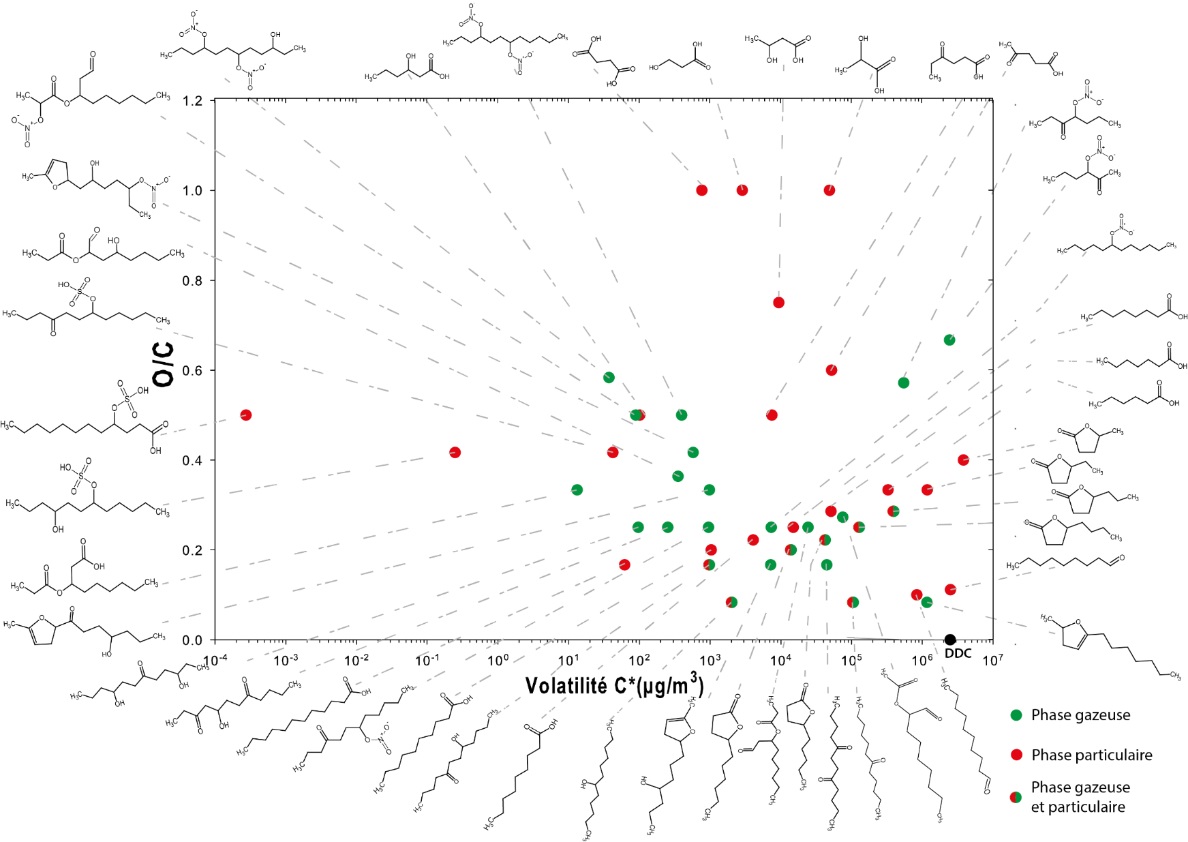Axis 2: The evolution of organic carbon and its impact on the balance sheet of photo-oxidants
Organic matter represents a large fraction of tropospheric aerosol, and a significant part of this fraction is of secondary origin. This secondary fraction, known as SOA (Secondary Organic Aerosol), is formed during the nucleation and/or condensation of low-volatility and/or water-soluble compounds formed during atmospheric oxidation. Although our understanding of SOA formation processes has progressed considerably in recent years, the representation of its mass variability is poorly constrained in current models, its heterogeneous reactivity still poorly documented, and its spectral optical properties poorly informed.
To improve our understanding of the formation, evolution and properties of carbonaceous aerosols, LISA is studying :
- AOS formation, speciation and aging processes. The aim is to understand the sensitivity of AOS formation, speciation and aging to precursor structure and environmental conditions (temperature, humidity, photolysis, etc.). To this end, we are studying the mechanisms of AOS formation and aging in the CESAM simulation chamber, and assessing our understanding of the processes by comparing explicit simulations of AOS formation carried out with the GECKO-A tool with the results of experiments in the simulation chamber.
- the influence of the cloud phase on AOS. This process of AOS formation remains largely unquantified, and the impact of pH or the presence of transition metals poorly constrained. We are therefore investigating the role of clouds on the formation of AOS, in particular from the oxidation of isoprene, carbonyls and polyfunctional organic acids, through experimental studies in the CESAM simulation chamber.
- interactions between VOCs and desert dust. These studies aim to identify the mechanisms of these interactions and their impact, both on the climatic properties of terrigenous dust (optical and hygroscopic properties), and therefore on the radiative effects for which they are responsible, and on the formation of AOS.
- the optical properties of carbonaceous aerosols. This involves the study of the optical properties of carbonaceous aerosols, and their variability as a function of their emission sources/processes and during atmospheric aging (irradiation, oxidation, humidification...). We are conducting experiments in the CESAM simulation chamber to link the scattering, absorption and hygroscopicity properties of carbonaceous aerosol to its molecular speciation.

Distribution des espèces détectées en phase gazeuse et/ou dans l’AOS au cours d’une expérience d’oxydation du dodécane par OH dans la chambre de simulation CESAM (Lamkaddam et al., 2020).

